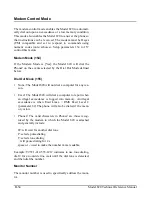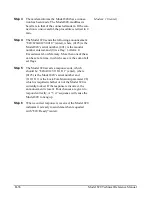
C-12
Model 820 Technical Reference Manual
occur. Unfortunately, this word is used also to describe sounds with
no tonal content (random):
Ambient:
The all encompassing sound at a given location caused
by all sources of sound. It is generally random, but need not be.
Background:
The all encompassing sound at a given location
caused by all sources of sound, but excluding the source to be mea-
sured. It is essentially the sound that interferes with a measure-
ment.
Pink:
It is a random sound that maintains constant energy per
octave. Pink light is similar to pink noise in that it has a higher
level at the lower frequencies (red end of the spectrum).
White:
It is a random sound that contains equal energy at each fre-
quency. In this respect, it is similar to white light.
Noise Dose (D)
It is the percentage of time a person is exposed to noise that is
potentially damaging to hearing. Zero represents no exposure and
100 or more represents complete exposure. It is calculated by
dividing the actual time of exposure by the allowed time of expo-
sure. The allowed time of exposure is determined by the Criterion
Duration and by the sound level (the higher the level, the shorter
the allowed time). The sound levels must be measured with A-fre-
quency weighting and slow exponential time weighting. See Pro-
jected Noise Dose.
where T is the Measurement Duration and T
i
is the Allowed Expo-
sure Time.
Standard
: ANSI S12.19
Noise Exposure
(See Sound Exposure)
OSHA Level (L
OSHA
)
The Average Sound Level calculated in accordance with the Occu-
pational Safety and Health Administration Exchange Rate and
Threshold Level.
D
100
T
T
i
----
100
T
T
c
------------10
L
i
L
c
–
(
)
Q
⁄
=
=






























